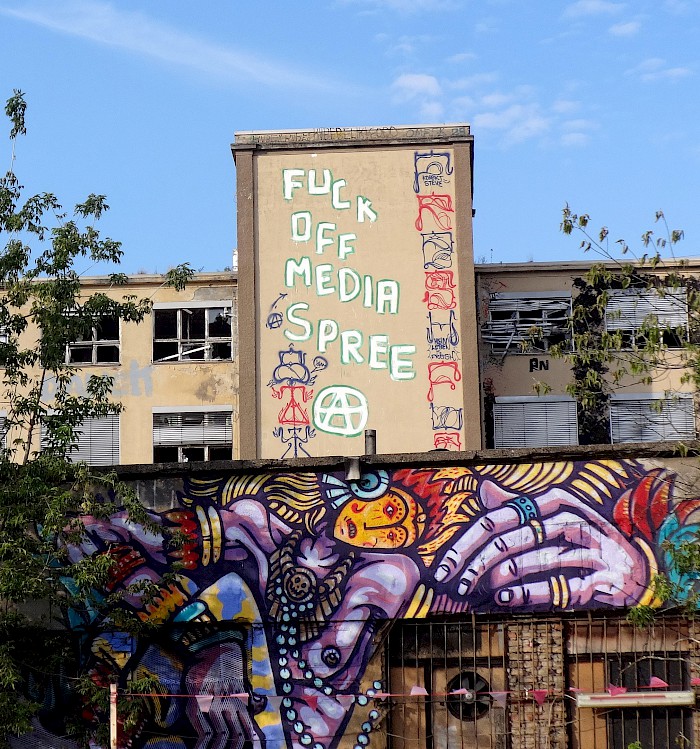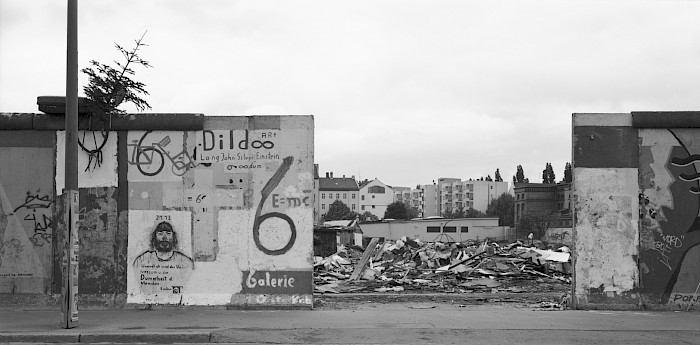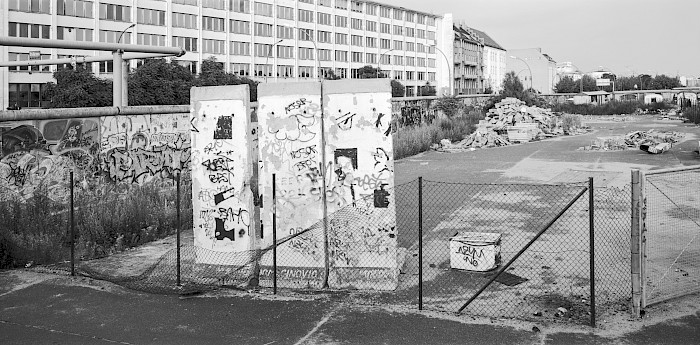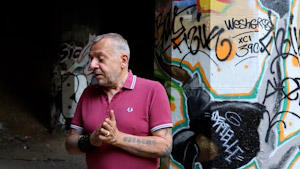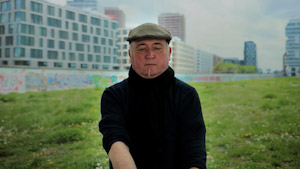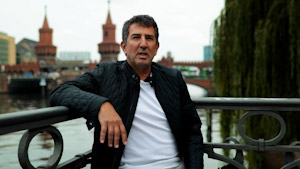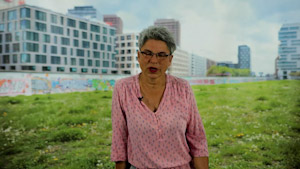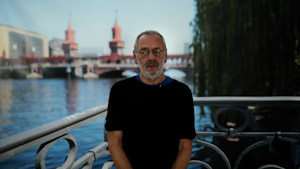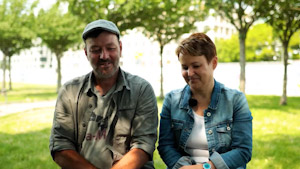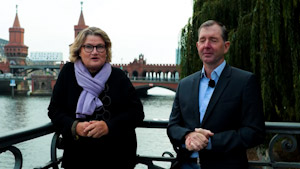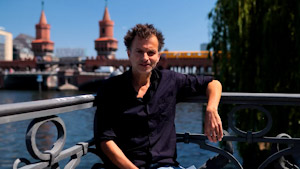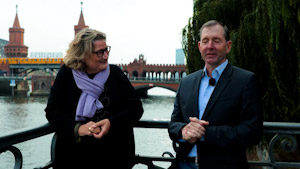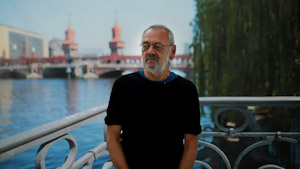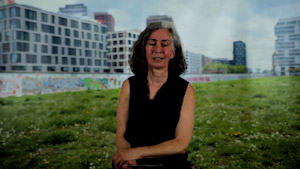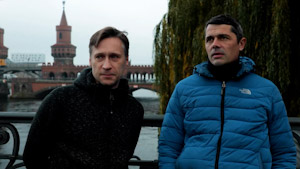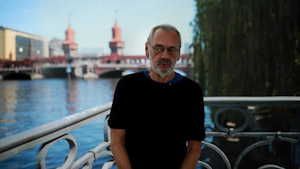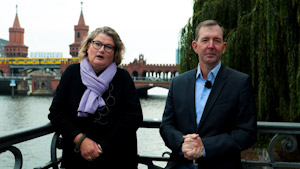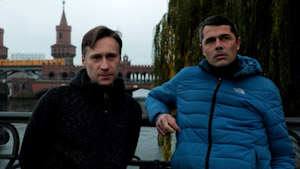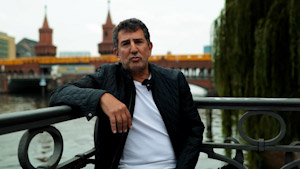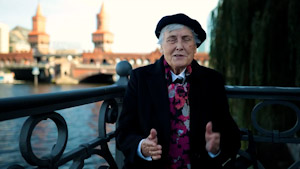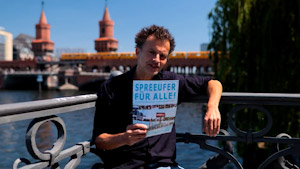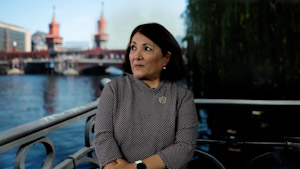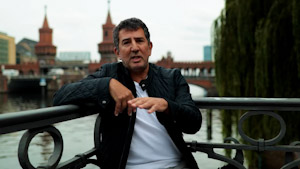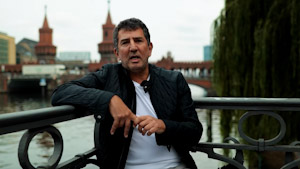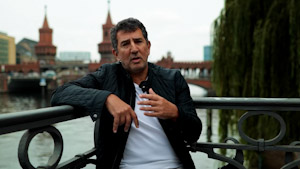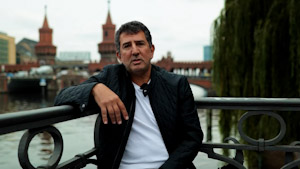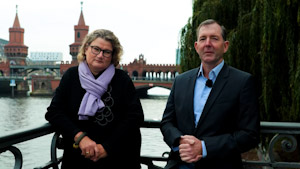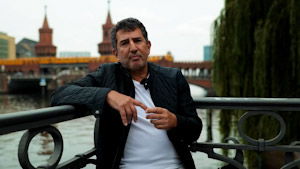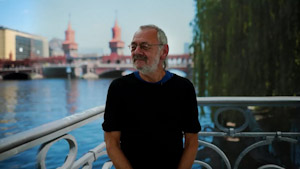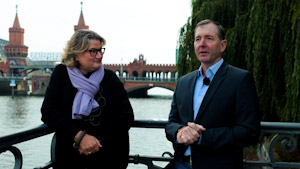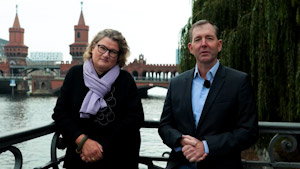1990: Free Spaces Emerge
Lots of space and little money: Berlin in the 1990s was a city of opportunity, but it offered few prospects for making money. There were vast amounts of vacant lots throughout the city, especially in the eastern part. Berliners used these open spaces until investors bought the land to build on, sell or lease. The public remained largely unaware that this was happening on Mühlenstraße in Berlin-Friedrichshain. The former border area was not integrated into the neighborhoods of Friedrichshain.
"The idea was: The past is the past. We don’t want anything to do with that. We are going to do everything new now. […] Today, we’d probably handle it differently, but it is also a testimony to the times."
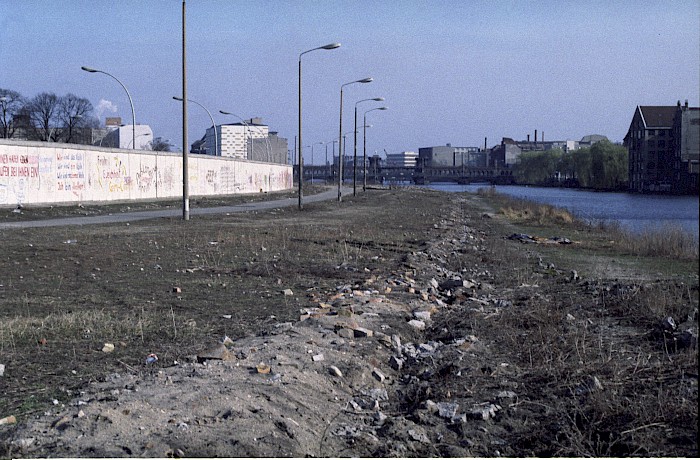
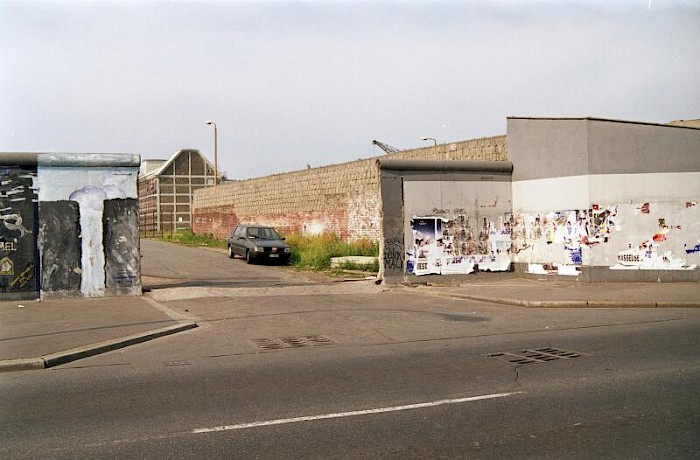
Plans to Sell and Protests
"The West German idea has completely overshadowed the romanticism of these lost places."
Only after many of the open spaces had disappeared from the city center did the residents of Berlin begin to focus more intensely on the question of urban development. The establishment of the "Media Spree" set off the first protests against the privatization of the land along the river. "Media Spree" was an association of large investors interested in establishing in public-private partnership media companies on the Spree between Elsen Bridge and Jannowitz Bridge. This plan, however, was opposed by a vocal citizens’ group, who organized initiatives such as "Sink the Mediaspree." They demonstrated in creative ways, drawing public attention to their demand for preserving the public space.
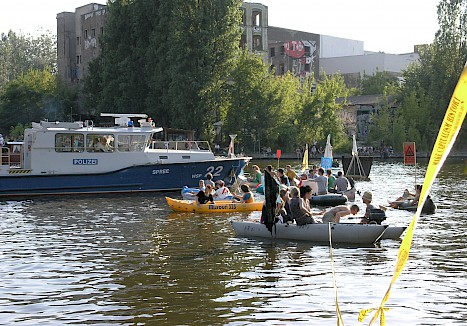
"This is not a place tourists like. There are no Berliners here. There are no flats. It is basically a dead, sleepy town, or what do you call it? A dead office town."
The American investor Anschutz was able to move forward with his plans without arousing much public attention. The Anschutz Entertainment Group bought the area on Mühlenstraße between Ostbahnhof and Warschauer Straße and built an event arena. In 2006, Anschutz removed the artwork "Masks" from the East Side Gallery to build a boating dock for the arena. The painting was moved next to the dock. In 2013, another investor, Maik Uwe Hinkel, did something similar during construction of the "Living Levels" apartment building. He removed the artwork "Himlen over Berlin" to provide driveway access. This time thousands of people demonstrated against the construction plans and the destruction of the Gallery. More than 30,000 people signed the petition "Save East Side Gallery."
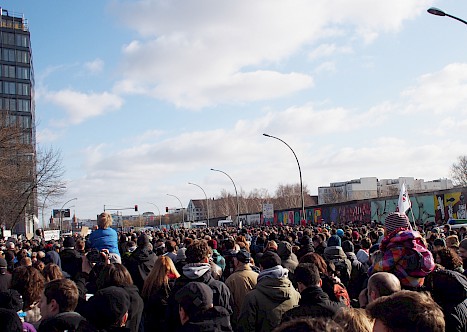
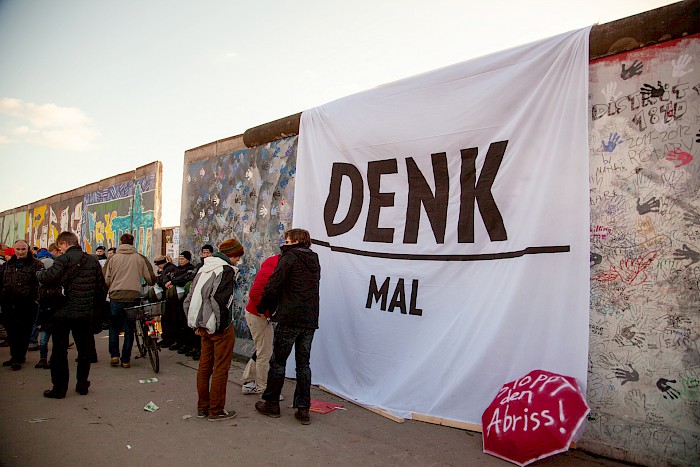
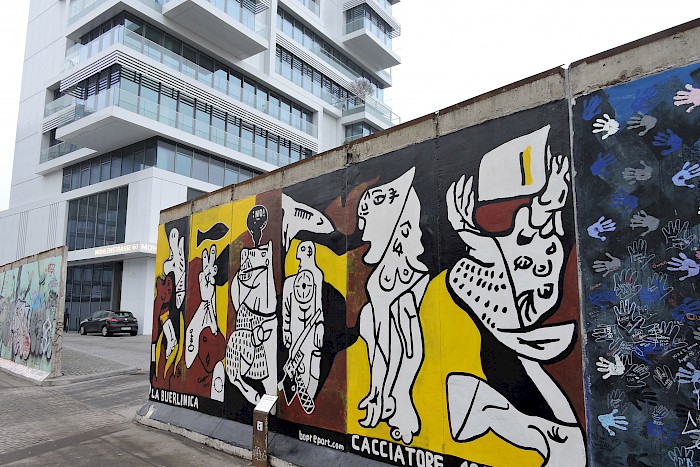
Civil Protests Achieve Partial Success
The protests were successful in part: Fewer sections of the Wall were moved than had originally been planned and investors promised to create a public path along the bank of the Spree. The Friedrichshain-Kreuzberg district was able to stop the construction of ten townhouses along the Spree. After rezoning building land into green space, it established a public park that was financed through compensation paid by Anschutz. This guaranteed that at least some of the Spree grounds would remain publicly accessible.
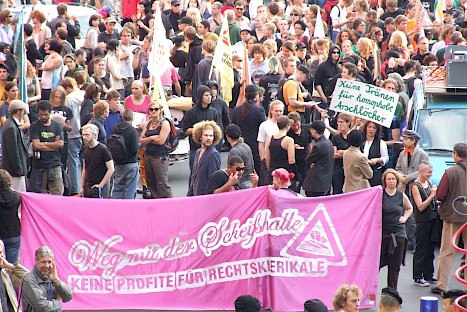
Looking Back: Urban Planning Since 1992
In 2013 it was too late to stop other construction projects that had been approved much earlier. In late 1992, the Senate Department for Urban Development and Housing announced an urban planning competition that included the properties on Mühlenstraße. The goal was to gather ideas about how best to develop the area around the train station (Ostbahnhof) and along Mühlenstraße and to restore the urban infrastructure destroyed by the Berlin Wall. The resulting "General Plan for the Train Station/Spree Embankment" laid the foundations for the development of the Spree riverbank that exists today. Until the 2000s, the public remained unaware of the building permits that had been granted and their consequences.

"I found it a bit intrusive and also perhaps a bit brazen, because the East Side Gallery is also a place of international interest."
The 2013 debate over the removal of Wall sections drew the public’s attention to the East Side Gallery’s precarious future. This served as the impetus for a five-year political debate that ended with the state of Berlin’s decision to preserve the Gallery for posterity. No more artworks were removed from the monument after this. Responsibility for the East Side Gallery was transferred to the Berlin Wall Foundation in November 2018. The foundation was entrusted with the task of preserving the monument and strengthening the identity of the East Side Gallery through historical and political educational work.
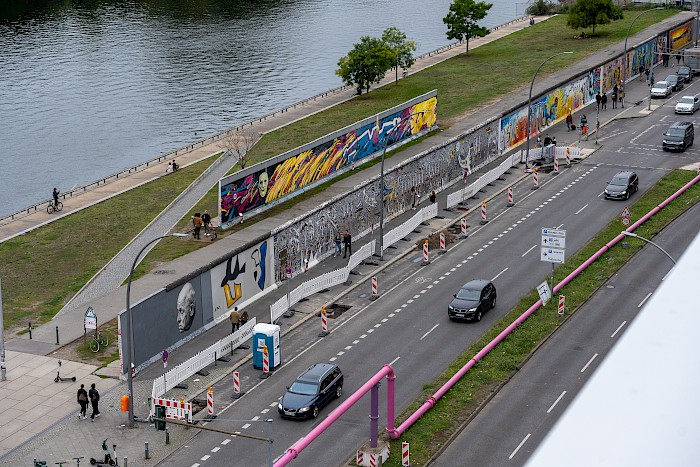
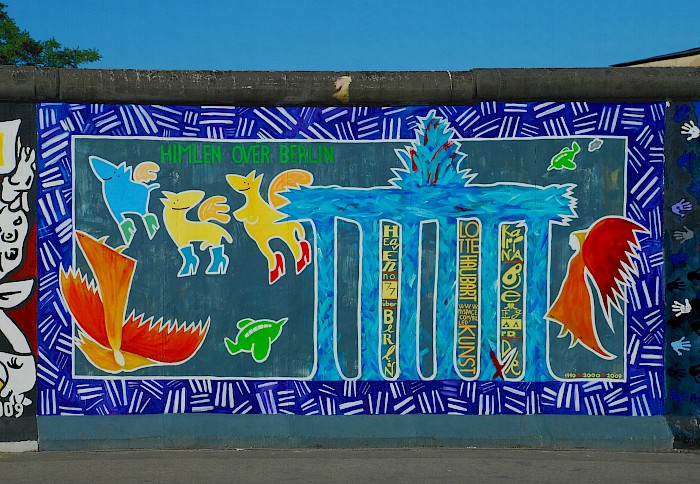
Wjatscheslaw Schljachow: “Die Masken“ Karina Bjerregaard: “Himlen over Berlin“
Mirta Domacinovic’s artwork "Signs in the Row" was lost in the mid-1990s when it was moved during the eviction of the trailer camp in 1996. The Trockland company moved other Wall segments to the park to create access to its hotel and residential complex "Pier 61 I 64." The artwork was reassembled in 2022.
Mirta Domacinovic: “Zeichen in der Reihe“
Contemporary witnesses remember
Additional information:
The video shows the East Side Gallery as it appeared in 1990, before pieces of the Wall were removed from the Gallery. The first works of art are already finished.: https://www.youtube.com/watch?v=jOqyt1Y5tH8
